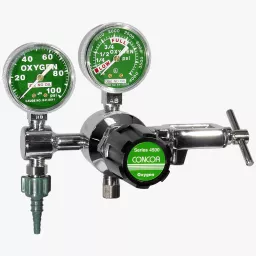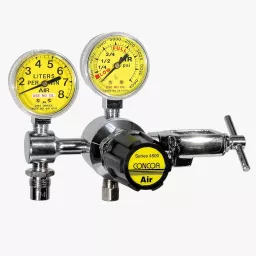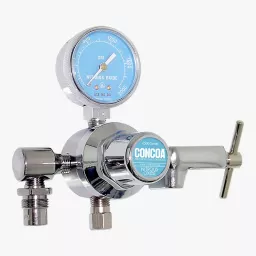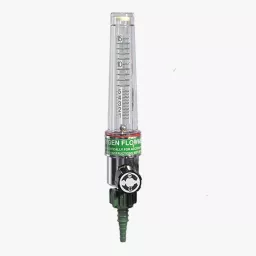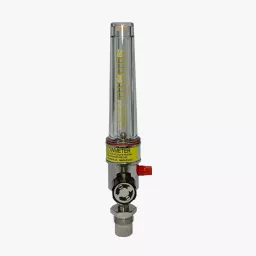Respiratory therapy, or medical gas therapy, involves the process of delivering pressurized gases to treat a wide variety of pulmonary conditions. When delivering respiratory therapy, it is important to consider the type of gas, dosage, and delivery method. Each of these may vary based on a patient's condition.
CONCOA offers a variety of medical regulators for use with oxygen, medical air, and nitrous oxide for respiratory gas therapy. Standard preset medical regulators with a set delivery pressure of 50 PSIG (4 BAR) are ideal for therapeutic applications requiring uniform delivery pressure at all times. These regulators do not allow the user to adjust delivery pressure or control flow rates. Adjustable medical regulators allow the user to control the delivery pressure between 0-100 PSIG (0–7 BAR), making them ideal for a range of respiratory applications, from low- and high-pressure delivery systems to reservoir and enclosure delivery systems. Designed for heavy use, they come with a variety of connectors to fit small, medium, or large cylinder supplies. Similarly, CONCOA flowgage and flowmeter regulators are designed for heavy use and appropriate for a variety of therapeutic applications. Flowgauge regulators permit the user to control the flow rate of gas being used. These regulators are fully adjustable to deliver a continuous flow of 1–5 liters per minute (LPM), 2–8 LPM, or 2–15 LPM. They have two gauges; the cylinder gauge indicates medical gas remaining in the cylinder, and the other displays the LPM reading. CONCOA medical flowmeter regulators combine a regulator and a flowmeter and function much like a flowgauge regulator, delivering a continuously adjustable flow of either 1–8 LPM or 2–15 LPM. The only difference is that a flowmeter tube is attached to measure the LPM instead of a gauge. Because a flowmeter is more precise and allows the user to have better control of the LPM rate, many medical applications prefer a flowmeter to a gauge.
In addition, CONCOA offers specialty medical regulators designed for infant or pediatric respiratory therapy or portable emergency respiratory therapy. Engineered to administer oxygen to infants with respiratory problems, CONCOA pediatric flowgauge regulators have a low flow range of 0.2–1 LPM. CONCOA mini-med flowgauge regulators are lightweight and compact, making them convenient for emergency use. Mini-med regulators are available in adjustable flowrate models, which provide a continuous flow of 2–15 LPM, as well as a preset model, which assures a continuous, measured oxygen flow of 6 LPM.
For countries following United States standards for medical regulators, CONCOA medical regulators are outfitted with CGA inlet connections and Diameter-index Safety System (DISS) outlet connections specific to each medical gas. Appropriate CGA inlet connections provide a level of safety by preventing improper connections of gas sources and devices based on pressure and type of gas. DISS outlet connections include 1240, 1160, and 1040 for easy connection to medical hoses, flowmeters, or flowmeter add-ons. In addition, following Food and Drug Administration (FDA) guidance regarding standardized color-coding used by the medical gas industry in the U.S., CONCOA color codes all medical devices according to their specific intended gas use. Accordingly, all CONCOA color-coded medical regulators have matching gauges, knobs, and product labels, which help indicate the product’s use. Please note that CONCOA medical regulators are FDA-listed for therapeutic use. However, they may not conform to local requirements for medical gas use outside the United States.
CONCOA's FDA-listed line of medical regulators delivers precise pressure and flow control for respiratory applications. CONCOA's 305 and 315 Series regulators, with their uniquely formed orifice design, enable custom gas blends like 60% helium-balanced oxygen (heliox mixtures) to be delivered with precise flow control.

